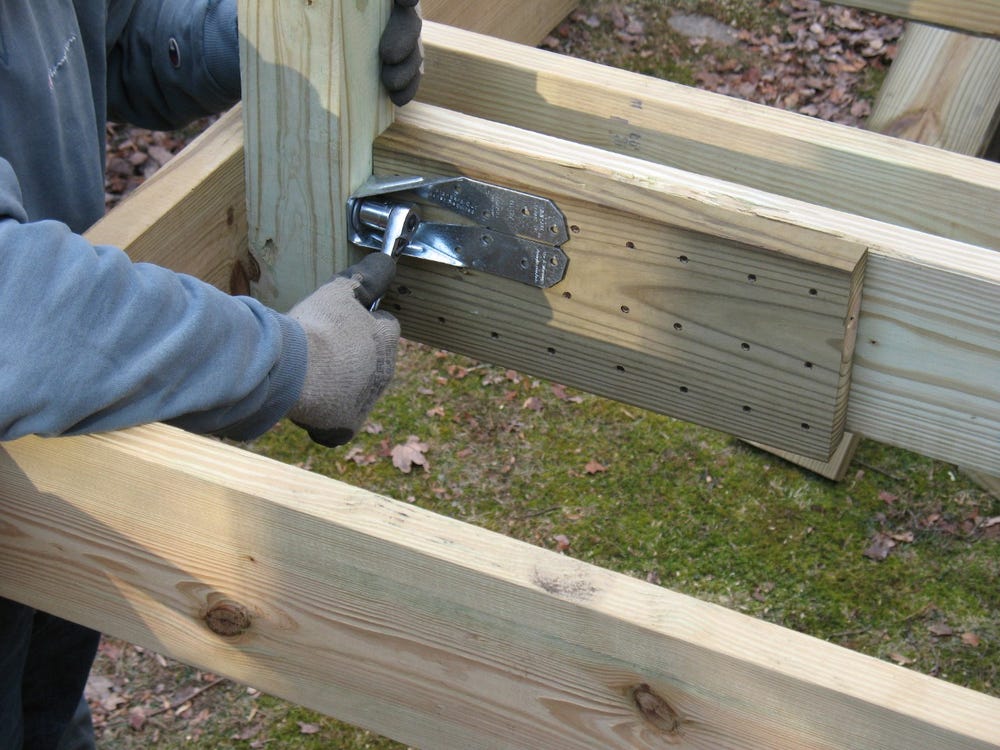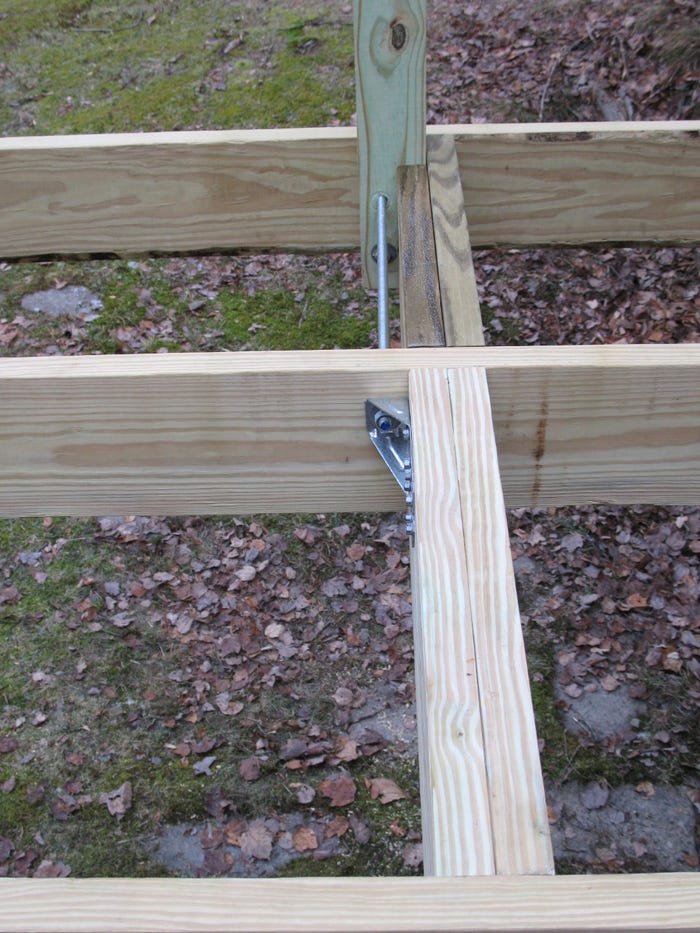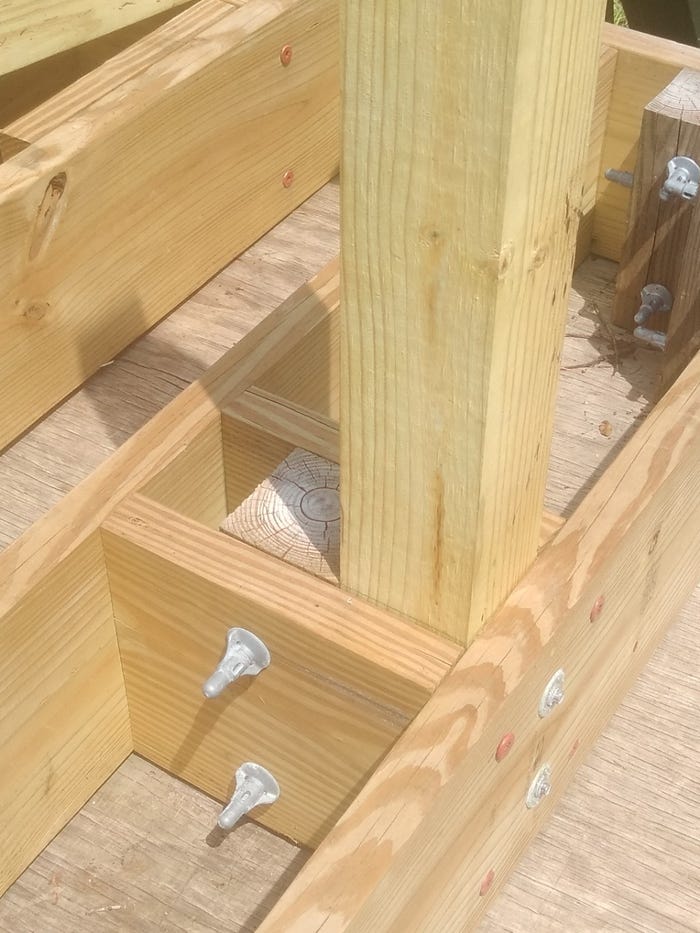The International Residential Code has a new section that gives more guidance on guardrails/guard posts.
August 18, 2021

Mike Guertin
The International Residential Code (IRC) has always had a requirement that guardrails (the code refers to them as 'guards') be able to support a 200 lb. load.
The code never told us how to attach guard posts to meet the requirement, so it was left up to deck builders to devise their attachment detail.
And the code left it up to building inspectors to determine whether a builder's detail met the code or not.
The 2021 IRC has a new section—R507.10 Exterior Guards—that gives us a little more guidance.
I'll spare you the code language and get to the heart of the new subsections.
When installing a guardrail post to the side of a deck joist (or a beam) you must devise an attachment system to secure that joist to adjacent joists to prevent rotation of the joist when you push against the top of the post.
And there's a limitation: The connection can't rely only on fasteners driven into end grain.
That's because screws and nails were driven into end grain pull out easily when the post is pushed.
Let's look at two common situations—guard posts fastened to a rim joist and posts fastened to the end joist.
Some deck builders bolt or screw guard posts to the rim joist and fasten the rim joist to the ends of the deck joists with nails or screws.
This would not be allowed under the new code. When you push against the top of the guard post the force is transferred into the rim joist and it would rotate.
The only thing resisting the rim joist rotation is the screws or nails driven through the rim joist into the end grain of the joists.
To make a code-compliant connection another fastening method would need to be used to prevent the rotation that doesn't rely solely on the screws or nails into the end of the joists.
So, what options do you have to reinforce the rim joist, so it doesn't rotate or to attach the post in a different fashion?
You could use a metal connector to fasten the post and/or the rim joist to the deck joists—and there are connectors specifically made to do this. (below)

Or you can install blocking between the adjacent joists and the post and the rim joist in a way that prevents rotation of the rim joist provided the fasteners are in shear rather than withdrawal when a force is applied to the top of the post. There are tested designs using structural screws and blocking to do this or devise one of your own. (below)

The end joist of a deck will rotate when a force is applied to the top of the post fastened to the joist without additional reinforcement. So, you must connect the end joist to other joists in the deck frame to prevent rotation.
A post to frame detail can be devised using metal hardware and blocking, blocking and screws or maybe even decking fastened above and blocking below. (Main image and below)

Whatever solution you go with would technically have to be designed following accepted engineering principles to resist a 200 lb. load on the top of the guard post.
But in a practical sense, your design must be approved by the local building official.
Instead of coming up with my own post attachment designs, I rely on a few resources with a prescriptive post to frame connections that have been tested to meet a 500 lb. or greater test load that the manufactured railing system manufacturers must comply with.
The American Wood Council's DCA 6 "Prescriptive Residential Wood Deck Construction Guide"
Simpson Strong Tie's Technical Bulletin "Code-Compliant Guardrail Post Connections"
FastenMaster's Deck Post Connections
We'll be demonstrating a dozen more guard post to deck frame attachment details and reviewing the code requirements in more detail at the Deck Workshop at the PSP/Deck Expo in Dallas, Nov. 16–18.
Mike Guertin has written hundreds of articles for publications such as Fine Homebuilding, the Journal of Light Construction and Professional Deck Builder as well as authoring several books. He's also known for his how-to videos and live events at venues such as JLC Live, the Remodeling Show, IBS, IRE and other trade shows along with numerous lumberyard events.
You May Also Like


